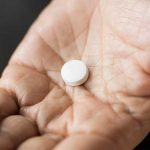Opioid analgesics are a class of drugs that treat various types of pain, including chronic pain and cancer pain. There are three main types of opioids: natural opiates, semi-synthetic opioids, and synthetic opioids.
Natural opiates, such as morphine and codeine, are naturally derived from the opium poppy plant.
Semi-synthetic opioids, such as oxycodone (OxyContin) and hydrocodone (Norco and Vicodin), are synthesized from natural opioids.
Synthetic opioids are fully human-made. They’re often considered the most dangerous type of opioid.
Commonly Abused Synthetic Opioids
Like other opioids, synthetic opioids provide pain relief by attaching to opioid receptors throughout your body. They also slow down your central nervous system, which can make you feel relaxed and happy, or “high.” That’s why some people abuse synthetic opioids.
Synthetic opioid abuse occurs when you use a synthetic opioid in a manner not recommended by a prescribing doctor. For instance, you might take higher doses than prescribed, mix it with other drugs, or take it without a prescription.
The most commonly abused synthetic opioids include:
Fentanyl
Fentanyl is a prescription opioid used to treat severe pain caused by cancer. According to the Centers for Disease Control and Prevention (CDC), it’s up to 50 times stronger than heroin and 100 times stronger than morphine. It’s also been linked to numerous drug overdose deaths.
Fentanyl often appears on the illegal drug market as a white powder. Many drug dealers secretly add it to other substances, including illicit drugs like cocaine, meth, and marijuana and prescription drugs like benzodiazepines, amphetamines, and other opioids.
Some drug manufacturers have started creating fentanyl analogs (or analogues). These substances have similar chemical structures to fentanyl.
Carfentanil
Carfentanil is a fentanyl analog that veterinarians use to tranquilize elephants and other large animals. According to the United States Drug Enforcement Administration (DEA), it’s about 100 times stronger than fentanyl and 10,000 times more powerful than morphine.
It poses an extremely high risk of overdose. As with fentanyl, carfentanil is sometimes added to other street drugs.
Alfentanil
Alfentanil is a fentanyl analog used for sedation before surgery. It’s sold under the brand name Alfenta.
Tramadol
Tramadol is a synthetic analog of codeine. It’s used to treat moderate to moderately severe pain. It’s prescribed under the brand names ConZip, Qdolo, and Ultracet.
Meperidine
Meperidine is a synthetic opioid used to treat moderate to severe pain. It’s prescribed under the brand name Demerol.
Methadone
Methadone is a synthetic opioid used to treat moderate to severe pain. It’s also used to ease cravings and withdrawal symptoms in people addicted to other opioid pain relievers.
Buprenorphine
Buprenorphine is a synthetic opioid that, like methadone, can help treat addictions to other opioid painkillers.
Levorphanol
Levorphanol is a synthetic opioid used to treat moderate to severe pain. While it used to be prescribed under the brand name Levo-Dromoran, it’s now available only in generic form.
Propoxyphene
Propoxyphene is a synthetic opioid used to treat mild to moderate pain. In 2010, it was discontinued by the United States Food and Drug Administration (FDA) because it can cause fatal heart disturbances.
U-47700
U-47700 is a synthetic opioid that’s about 7.5 times stronger than morphine. It acts similarly to heroin and resembles a white or light pink powder. It’s often called pink heroin, pinky, or pink.
Risks Of Synthetic Opioid Abuse
All synthetic opioids can cause overdose and addiction.
Overdose
Synthetic opioid pain medications slow down your breathing. When you abuse these drugs, your breathing may slow to a dangerous degree and cause a fatal overdose. Common symptoms of opioid overdose include:
- slow, troubled breathing (respiratory depression)
- nausea and vomiting
- pale, clammy skin
- bluish lips or fingernails
- extreme drowsiness
- loss of consciousness
If you or someone you know experiences these symptoms, seek medical help right away. When left untreated, an opioid overdose is life-threatening.
Most opioid overdoses are treated with naloxone (brand name Narcan). This medication rapidly reverses the effects of an opioid overdose. If you or a loved one regularly uses opioids, it’s a good idea to keep naloxone on hand.
Addiction
Like many other drugs of abuse, opioids are highly addictive. Opioid addiction (also called opioid use disorder) is a serious disease that makes you feel unable to stop using opioids despite negative consequences.
The most common signs of opioid addiction are tolerance and physical dependence.
Tolerance means that you need increasingly larger or more frequent opioid doses to feel high. Physical dependence means that your body starts relying on opioids to function normally. If you stop using them, you’ll experience withdrawal symptoms such as:
- anxiety
- trouble sleeping
- sweating
- nausea and vomiting
- diarrhea
- abdominal cramping
People with opioid addiction should seek professional help at a substance abuse treatment program.
To learn about opioid addiction treatment options, please contact Northeast Addictions Treatment Center. We provide mental health counseling, medication-assisted treatment, and a variety of other evidence-based, recovery-focused services.
People Also Read:
Sources
Written by
Northeast Addition Editorial Team
©2024 Northeast Addition Center | All Rights Reserved
This page does not provide medical advice.





